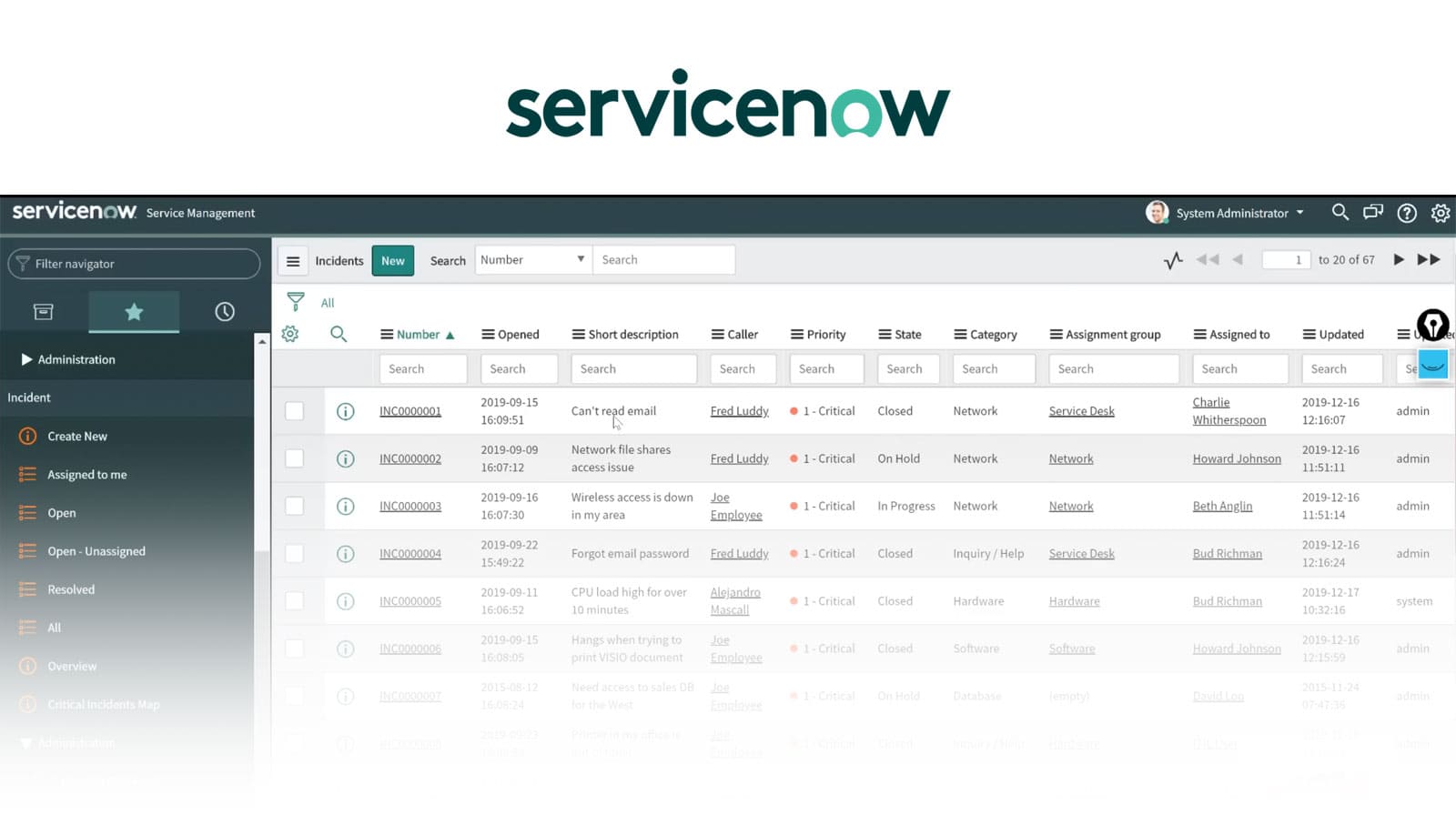Curious about ServiceNow and Spiceworks? Let's put these two popular IT service management platforms side by side. While they take distinctly different approaches - from their target users to their feature sets - seeing them compared makes it easier to understand where each one shines.
More organizations are taking time to evaluate their ITSM options carefully, and for good reason. The right platform can transform how teams manage IT services, assets, and support.
And for those exploring their options, we'll also touch on InvGate Service Management, an alternative path to explore.
Here's what you need to know!
TL;DR
- Spiceworks offers a free, lightweight solution ideal for small teams focusing on basic IT ticketing and inventory management.
- ServiceNow provides a comprehensive ITSM platform with enterprise-grade features and robust integration options for growing organizations.
- InvGate Service Management combines user-friendly design with scalable features like customizable dashboards and knowledge management, all at a cost-effective price.
We tried to be as thorough as possible, but if you don't have enough time to read it through and through, here's (another) TL;DR: InvGate Service Management can do everything we say here, and you can test it right away for free for 30 days.
What to look for in an ITSM solution
When comparing ServiceNow and Spiceworks, it’s clear that you’re evaluating two vastly different IT solutions. Spiceworks caters to small businesses with basic IT help desk and inventory needs, while ServiceNow offers enterprise-grade functionality for complex IT ecosystems.
If you're considering this leap, it’s crucial to assess your needs carefully to avoid investing in tools that are either too limited or unnecessarily complex.
Before deciding on a tool, consider these key aspects:
- Ease of use and adoption: A platform should have an intuitive interface to minimize training time and encourage user adoption.
- Scalability: The solution must grow with your business, accommodating increasing workloads and complexity without requiring a complete overhaul.
- Automation: Automating ticket management, workflows, and repetitive tasks reduces manual effort and improves efficiency.
- Integration capabilities: Seamless compatibility with existing systems, including Asset Management, remote monitoring, and other IT tools, is essential for streamlined operations.
- Support and documentation: Robust support options and clear documentation can make a significant difference in how quickly issues are resolved.
- Pricing and value for features: Look for a balance between cost and functionality to ensure you're investing wisely.
- Feature alignment with your needs: Avoid selecting tools that are either too basic or excessively complex. For example, ServiceNow can be overwhelming for smaller teams, while Spiceworks may fall short for growing organizations.
What is ServiceNow?
 ServiceNow is a cloud-based platform specializing in IT Service Management (ITSM) and digital workflow automation. Established in 2004, ServiceNow has become a market leader in enterprise IT solutions. Its ITSM suite supports incident, problem, and Change Management alongside capabilities in IT Operations Management (ITOM) and HR workflows.
ServiceNow is a cloud-based platform specializing in IT Service Management (ITSM) and digital workflow automation. Established in 2004, ServiceNow has become a market leader in enterprise IT solutions. Its ITSM suite supports incident, problem, and Change Management alongside capabilities in IT Operations Management (ITOM) and HR workflows.
However, ServiceNow’s strength in customization and scalability comes at a price—both in terms of cost and complexity. Organizations with smaller IT teams may find it resource-intensive to implement and maintain.
What users like about ServiceNow
- Extensive features: Provides end-to-end IT service and operations management capabilities.
- Customization: Supports tailored workflows and processes to meet unique organizational needs.
- AI and analytics: Predictive capabilities enhance decision-making and efficiency.
- Scalability: Built for large enterprises with complex IT environments.
- Strong ecosystem: A vibrant community and extensive integrations with third-party tools.
What users dislike about ServiceNow
- High cost: Licensing, implementation, and customization expenses can be significant.
- Steep learning curve: Requires specialized knowledge for setup and optimization.
- Overwhelming for smaller teams: Excessive features can become a liability for those with simpler requirements.
- Implementation delays: Customization often takes longer than expected.
"If you have many different business rules and processes, this is a good choice. The amount of customizations and configurations make it a little hard to bring fast solutions or to handle the different permissions for a large company. The learning curve is kind of complicated."
Review by user in G2
What is Spiceworks?

Spiceworks is a free IT management platform designed for small businesses. Its core offerings include a basic help desk, inventory management, and network monitoring tools. Unlike enterprise-focused solutions, Spiceworks emphasizes simplicity and accessibility, allowing teams with limited resources to adopt it with ease.
Spiceworks also fosters a vibrant online community where IT professionals can share advice, resources, and solutions.
While it’s free and easy to use, Spiceworks lacks the advanced features and scalability required by growing businesses or enterprises. Its reliance on community support can also pose challenges for teams that need timely assistance.
What users like about Spiceworks
- Free platform: Makes it a cost-effective choice for small businesses.
- Ease of use: Designed for quick setup and minimal configuration.
- Community-driven: Strong peer-to-peer support through forums and discussions.
- Basic Asset Management: Includes inventory tracking tools.
What users dislike about Spiceworks
- Limited features: Misses critical ITSM functionalities like automated workflows.
- Scalability constraints: Not suitable for medium or large organizations.
- Outdated UI: The interface lacks a modern, polished feel.
- Reliance on community support: Can be problematic when urgent assistance is needed.

Considering InvGate Service Management as an ITSM solution alternative
InvGate Service Management provides a balance between simplicity and advanced functionality, offering features tailored to organizations of all sizes.
Intuitive interface
InvGate’s design prioritizes ease of use, ensuring that IT teams can quickly adopt the platform with minimal training. Features like drag-and-drop workflows and a clean dashboard help reduce the complexity often associated with ITSM tools.
 AI-driven automation
AI-driven automation
The platform includes AI-powered capabilities to handle repetitive tasks, offer intelligent ticket routing, and even predict potential incidents based on historical data. These tools gathered in InvGate's AI Hub, enhance efficiency and free up IT staff for more strategic tasks.
Robust integrations
InvGate Service Management integrates seamlessly with a wide range of third-party tools and platforms, extending its capabilities across your IT ecosystem. And when paired with our own InvGate Asset Management platform, you get an even deeper level of integration that provides complete visibility and control over both your assets and services from one unified system.
A native integration enables you to access asset data directly in tickets, automated workflows between platforms, and comprehensive reporting across your entire IT infrastructure.
 Flexible pricing
Flexible pricing
When evaluating help desk software, it's essential to look beyond the initial price tag. Switching costs can be significant, and it's crucial to consider the broader financial implications of transitioning to a new tool.
At InvGate, we offer transparent and competitive pricing, along with flexible licensing options that allow you to tailor your plan to your organization's unique needs and budget. In contrast, ServiceNow comes with a higher price point, and you may incur additional costs for integrations and specific features. To make an informed decision, it's vital to factor in these extra expenses and consider the total cost of ownership.
In conclusion
ServiceNow and Spiceworks cater to opposite ends of the ITSM spectrum, but neither may be ideal for businesses seeking a middle ground. Spiceworks is a free, basic tool for small teams, while ServiceNow is a comprehensive yet costly enterprise solution.
InvGate Service Management offers the perfect balance of functionality, usability, and scalability. With modern ITSM features, AI-driven tools, and flexible pricing, it’s an excellent alternative for organizations looking to improve IT operations without overcommitting to overly complex or basic tools.
Ready to take the next step? Request a free 30-day trial of InvGate Service Management today.
















